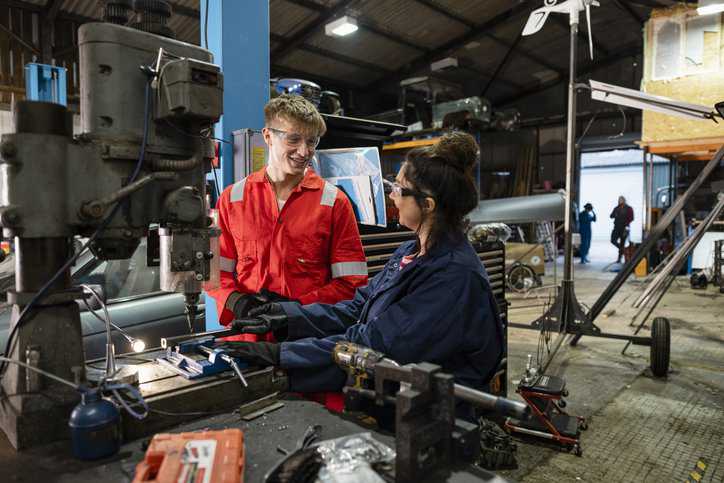ANSI RICOO1.2-2021: Process of Remanufacturing

The output of remanufacturing in the United States is worth $75 billion, providing 180,000 full-time jobs. Additionally, over 85% of the raw materials used to manufacture the original part are saved during the remanufacturing process. Hence, the remanufacturing industry is here to stay, supporting the American economy as well as the environment. ANSI RICOO1.2-2021: Specifications for the Process of Remanufacturing covers specifications for the process of remanufacturing products and parts.
Recycling Vs. Remanufacturing
Whereas recycling focuses on recovering the raw materials from used products, remanufacturing aims to restore entire products or components to their original or improved condition. By maintaining as much of the old device as possible, remanufacturing offers a vast benefit over recycling by reducing the amount of time and energy spent on recovering and processing materials for use in the creation of new products.
ANSI RICOO1.2-2021 specifies that remanufacturing refers to a comprehensive and rigorous industrial process by which a previously sold, leased, used, worn, remanufactured, or non-functional product or part is returned to a like-new, same-as-when-new, or better-than-when-new condition from both a quality and performance perspective and through a controlled, reproducible, and sustainable process. Hence, remanufacturing can help enable the transition to a circular and low carbon economy.
What Is ANSI RICOO1.2?
ANSI RICOO1.2-2021 defines and provides a benchmark for the process of remanufacturing. The American National Standard establishes specifications that characterize the remanufacturing process and differentiate remanufacturing from other practices. The specifications in ANSI RICOO1.2-2021 help assure that remanufacturing products provided to customers are reliable and of a consistent high quality. This standard is intended to serve as a baseline for additional standards for specific remanufactured products and product groups to be developed in the future.
An organization may apply to an accredited third-party in order to qualify for declaration of conformity to this standard.
How Does Remanufacturing Help Promote Sustainability?
Remanufacturing contributes to sustainability by significantly reducing waste generation, conserving natural resources, and lowering energy consumption. This process involves reusing existing parts and materials to restore old products to a like-new condition, effectively extending their lifespan and minimizing the need to produce new items from scratch. It helps conserve energy that would have been used to manufacture new parts. As such, remanufacturing aligns with the principles of a circular economy where products are kept in use for as long as possible.
The Growth of the Remanufacturing Industry
Original Equipment Manufacturers (OEM) are shifting toward remanufacturing, signaling growth in new investments in remanufacturing. This rapidly growing, global, high-technology industry includes a wide variety of business sectors, such as aerospace, automotive, construction, medical, and electrical industries. Combined with the high performance on offer, remanufacturing helps to satisfy consumers’ demand for new, quality technology, while limiting the impact on the environment.
If you have been purchasing remanufactured products, you are already participating in the movement for sustainability, and ANSI RICOO1.2-2021 assures that remanufactured products and parts are of high quality and reliability.
ANSI RICOO1.2-2021: Specifications for the Process of Remanufacturing is available on the ANSI Webstore.






